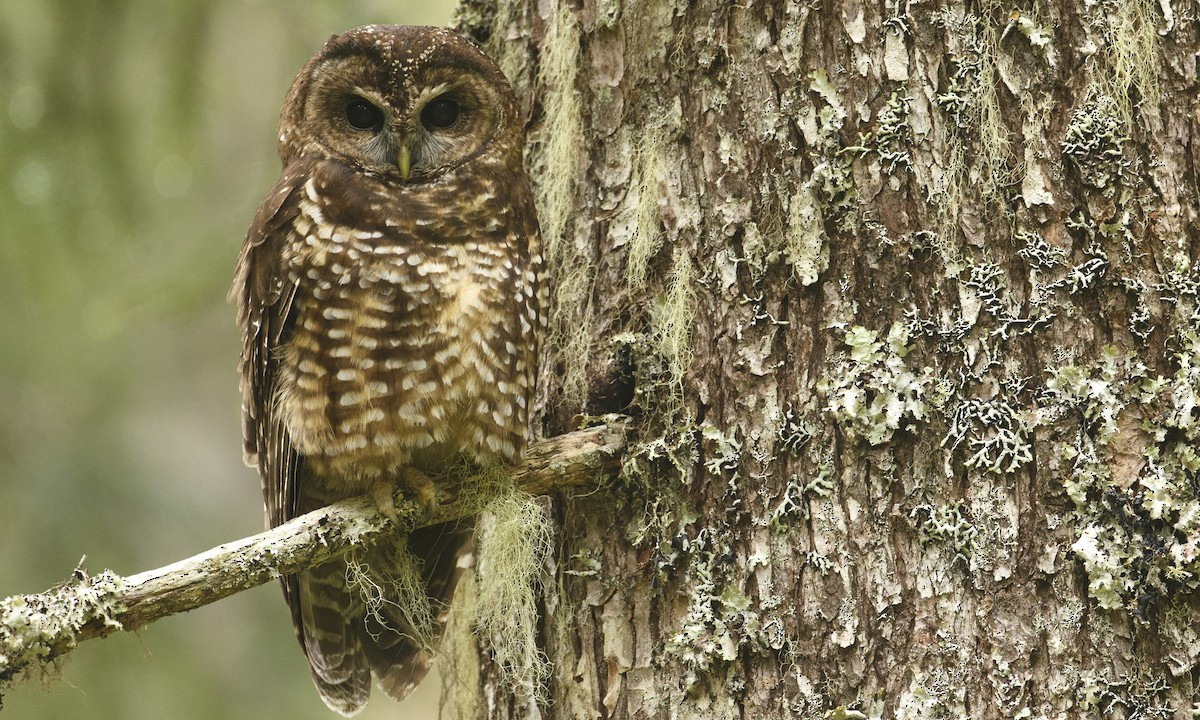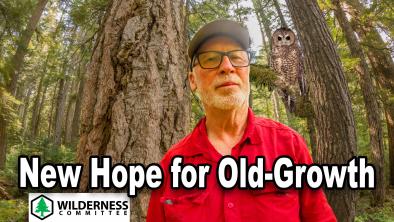Anne Murray: Is there any hope for the spotted owl, B.C.’s most endangered bird?
Georgia Straight

An unprecedented number of people have visited Boundary Bay over the last three months, with one purpose in mind: to look at owls. They have not been disappointed. Snowy owls from the Arctic have flocked there in abundance this winter, attracting thousands of people from all walks of life. Meanwhile, further up the Fraser Valley, in the shadow of the snowy peaks, another species of owl is fighting for survival. One of B.C.’s last remaining northern spotted owls, that elusive inhabitant of dark, old-growth forests, faces an uncertain future. Despite discovery of a nest site and radio tracking of the owl by government biologists, nearby forest continues to be cut. Chilliwack residents and conservationists across B.C., many of whom believed that the Post Creek and Ford Mountain forest was a protected area, are asking how logging can be permitted in the habitat of such a critically endangered bird.
Northern spotted owls live in coniferous forests in mountainous areas of southwestern B.C. and western U.S. states. Historically, their B.C. population was probably around a thousand birds, but declined precipitously as logging, road building, and urban development destroyed habitat. They dropped from an estimated 200 owls in 1993, to fewer than 20 in 2008; there may now be only six birds in the wild. Populations are also declining across the border. In contrast, the closely-related barred owl has expanded its range and is implicated in the spotted owl’s decline.
Why should we care about the loss of one shy and secretive bird, when over 300 bird species regularly nest in our province, including several other owls? Scientific arguments can be made about maintaining the food chain, biological diversity, and protecting the gene pool, for which birds at the peripheries of their range are particularly important. There is a legal argument: spotted owls are entitled by democratic mandate to protection under the federal Species at Risk Act. For me though, and I am sure for many other people, there is just something terribly sad about a bird slowly dying out, as the beautiful forests it inhabits are destroyed. Even if I were never to see a northern spotted owl, the importance of having places where birds and animals can flourish and survive freely in the wild is priceless. It is an indication of a mature and generous society to protect our natural heritage and pass it on to future generations, rather than losing it for short-term gain. Of course, governments do not take this viewpoint—they see their role as balancing environmental values against socio-economic ones, which are only measured in industrial terms. As a result, the people like myself who value nature intrinsically are not part of the equation.
The story of the spotted owl’s “management” illustrates this problem. The owl was known to be rapidly declining; scientific studies were unequivocal. In 1994 a range of options thrashed out by a panel of biologists and foresters led to a spotted owl management plan (SOMP1) based on the B.C. Forest Practices Code. The hope was “that owl populations would stabilize over the long term without significant impacts on timber supply and forestry employment”. It was anticipated that existing parks and protected areas could provide suitable owl habitat. It did not work out.
Constraints on forestry in B.C. are made for a number of reasons (e.g. visual, geotechnical, cultural) as well as for endangered species like the spotted owl. Since these constraints must not be allowed to significantly impact the timber supply, a variety of harvest strategies are encouraged. Types of logging, such as variable retention, commercial thin, and selective harvesting, are permitted with the idea that they enhance future, long-term owl habitat, an odd notion for the lay person to accept. More habitat was ostensibly set aside in a 2006 Recovery Plan and tree cutting continued under this guise of enhancement. Meanwhile, captive breeding and barred owl management began.
A revised management plan (SOMP2) in 2008 included yet more habitat protection. Predictably, licence holders’ timber supply was affected, so logging was permitted in some habitat areas to mitigate for lost opportunities elsewhere. In 2011, the B.C. government announced a series of Wildlife Habitat Areas in the Chilliwack Forest Region, replacing previous management plans. Collectively, 226,700 hectares of land would now be managed for spotted owl habitat, although again this did not exclude the possibility of logging, as according to the Forest Practices Board, “WHAs may be protected from logging through general wildlife measures associated with it, but not always”. This is why Tamihi Logging Co. is entitled to cut trees on 142 hectares in the Post Creek, Ford Mountain areas, in a WHA designated for the spotted owl.
The ambiguity and lack of clarity over the protection status of Wildlife Habitat Areas confuses the public and brings into question the government’s commitment to saving spotted owls from extinction. This is a province, after all, which has consistently rejected the possibility of species at risk legislation. Only successful legal action brought by environmentalists has enforced the federal Species At Risk Act for animals like the orca and mountain caribou.
Sadly, the long term prognosis for the northern spotted owl is poor. Despite some early success at the captive breeding program at Mountain View Conservation Centre at Langley, no chicks hatched in the last two years. Even if young owls are produced, restoration of wild populations requires ample old-growth habitat which ultimately rests on radically rethinking the way our forested landscapes are managed.


